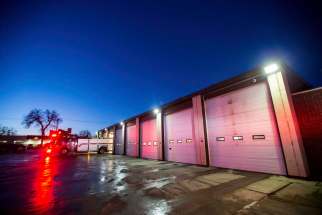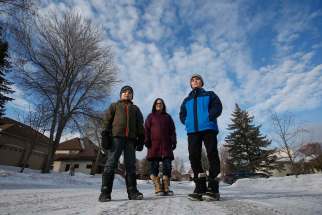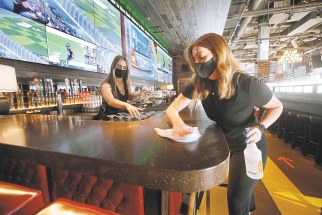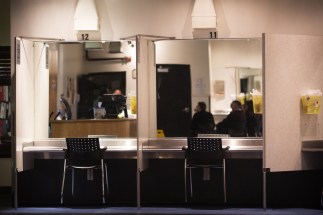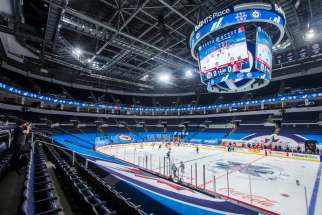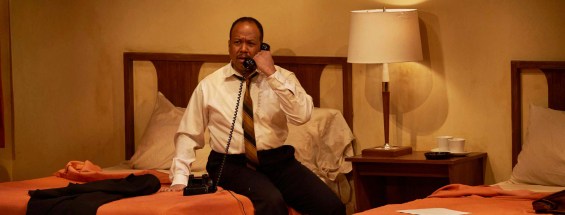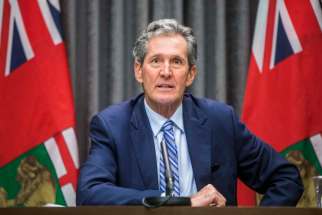Fans in stands still long way off
Read this article for free:
or
Already have an account? Log in here »
To continue reading, please subscribe:
Monthly Digital Subscription
$0 for the first 4 weeks*
- Enjoy unlimited reading on winnipegfreepress.com
- Read the E-Edition, our digital replica newspaper
- Access News Break, our award-winning app
- Play interactive puzzles
*No charge for 4 weeks then price increases to the regular rate of $19.00 plus GST every four weeks. Offer available to new and qualified returning subscribers only. Cancel any time.
Monthly Digital Subscription
$4.75/week*
- Enjoy unlimited reading on winnipegfreepress.com
- Read the E-Edition, our digital replica newspaper
- Access News Break, our award-winning app
- Play interactive puzzles
*Billed as $19 plus GST every four weeks. Cancel any time.
To continue reading, please subscribe:
Add Free Press access to your Brandon Sun subscription for only an additional
$1 for the first 4 weeks*
*Your next subscription payment will increase by $1.00 and you will be charged $16.99 plus GST for four weeks. After four weeks, your payment will increase to $23.99 plus GST every four weeks.
Read unlimited articles for free today:
or
Already have an account? Log in here »
Hey there, time traveller!
This article was published 24/02/2021 (1749 days ago), so information in it may no longer be current.
It’s been said absence makes the heart grow fonder. And there’s no question that’s the case for many hockey players these days who are growing tired of competing in empty arenas during a global pandemic.
Just check out what Winnipeg Jets forward Andrew Copp had to say the other day, while discussing the momentum swings his 11-6-1 club has already experienced in this unique NHL season. There’s been epic comebacks, blown leads, last-second daggers and overtime thrillers — with nary a fan in sight to experience the emotional roller-coaster.

“It’s starting to get a little old. We’re really missing the fans and the environment that this game creates is just so special. Obviously, we’re doing all the right things but I’m really looking forward to that day when those gates open back up, when we’ve got such great facilities and great rinks filled with passionate fans,” said Copp, who was quick to point out he wasn’t complaining but rather lamenting the temporary loss of what might have once been taken for granted.
“I really hope that they’re ready to go and be very, very loud after all of this time. We’re doing as best that we can, in terms of keeping energy up on the bench and we’ve found a way to do that. But it is getting to that point where it’s like ‘OK, when is everyone coming back?’”
A great question. And one that, at least here in Winnipeg, continues to go unanswered.
“It’s starting to get a little old. We’re really missing the fans and the environment that this game creates is just so special.”
– Winnipeg Jets’ Andrew Copp
I’ve confirmed that True North Sports & Entertainment has developed a comprehensive set of “plans and models” for what reopening the doors at Bell MTS Place (and Bell MTS Iceplex and Burton Cummings Theatre, which they also own) might look like, based largely on what similar-sized venues in other, mostly American, markets have done so far. They’re not willing to share details publicly at this point.
The organization is continuing to engage provincial health and government officials on the complex, ever-changing issue. The primary message? Just say the word. We’re ready as soon as you are.
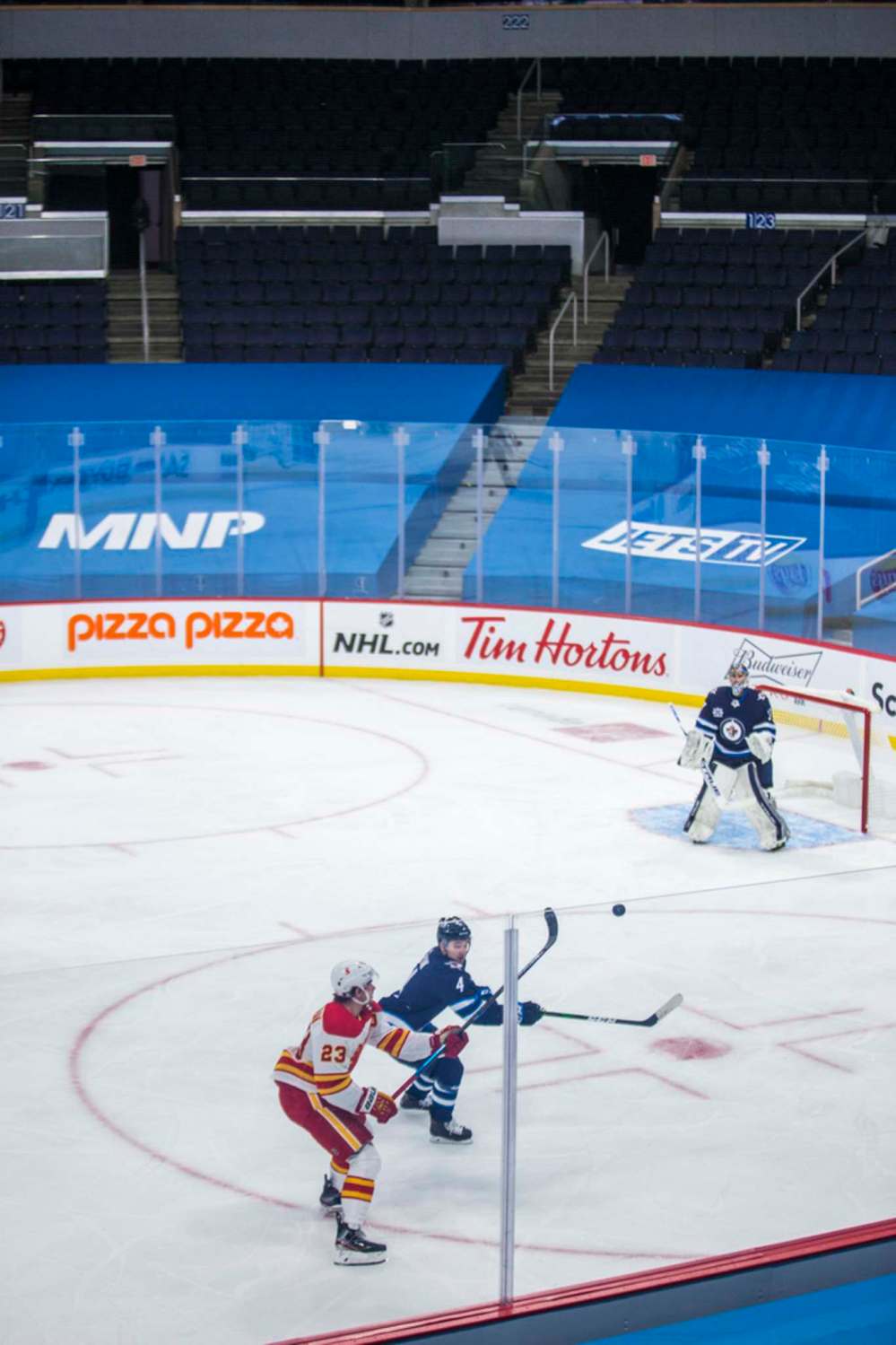
The only problem for them is that date could still be months away, well after the NHL regular-season is done in early May.
On Monday, Premier Brian Pallister said work is about to begin on how future reopenings might happen when it comes to things such as community events but cautioned that it’s still too early to talk about large group gatherings. Deputy premier Kelvin Goertzen will spearhead those discussions, but no other details or timeline was provided.
No doubt the Jets, along with the Winnipeg Blue Bombers, Winnipeg Goldeyes, Valour FC and Assiniboia Downs — which all hope to open their doors to paying customers at some point this year — will be monitoring the situation closely. But they remain at the mercy of the virus, the experts and the cautious reopening of society, which is the right move unlike the dubious strategies we’ve seen in many places south of the border.
“I really hope that they’re ready to go and be very, very loud after all of this time… it is getting to that point where it’s like ‘OK, when is everyone coming back?’”
– Winnipeg Jets’ Andrew Copp
It’s the same story across Canada, with bombastic Ottawa Senators owner Eugene Melnyk the only one to really go public at this point, a move he quickly came to regret. Just days before the season began, Melnyk expressed a desire to allow 6,000 fans inside the Canadian Tire Centre, citing a “robust public safety plan” which included “health protocols ranging from proper physical distancing, rapid testing and mask-wearing at all times.”
That was apparently news to Ontario public health officials, who quickly poured cold water on the idea. And Melnyk himself deleted his Tweet about an hour after it was posted, no doubt due to some instant backlash that must have come his way as his province was about to move into a more restrictive lockdown
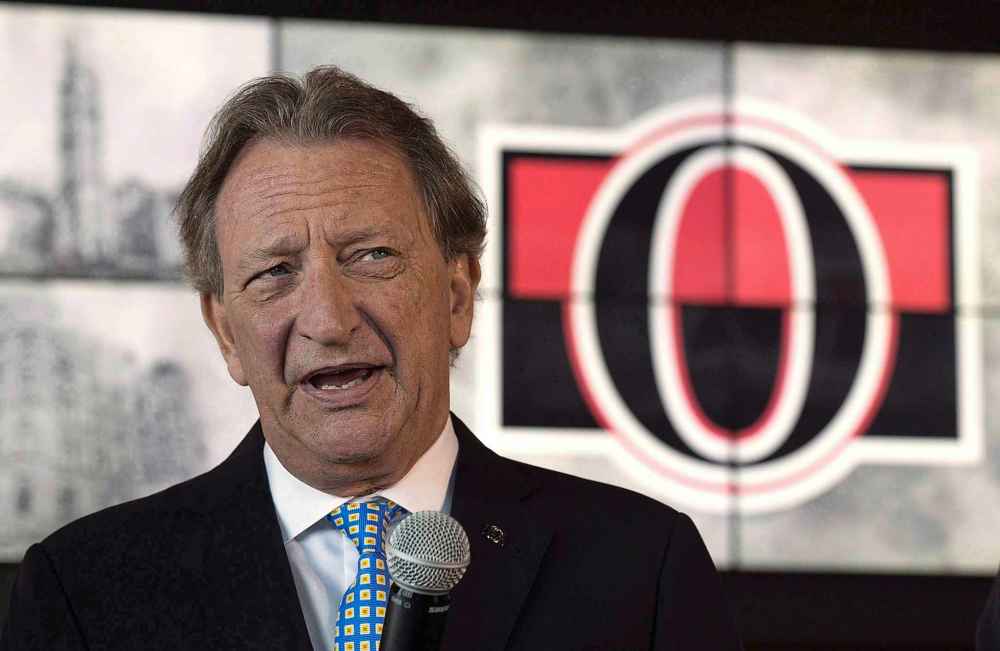
“That time is not now,” a subsequent mea culpa from Melnyk read. “Given the ongoing increase in daily COVID-19 cases… we understand as an organization that we must do our part to control this virus before we can entertain plans to bring fans back into our arena.”
It’s a much different story in the United States, where 13 of the NHL’s 24 teams now have the green light to put butts in seats and start chipping away at the massive financial losses they’re suffering. That’s a big jump from the three (Arizona, Dallas and Florida) which began the new campaign in mid-January. A tour around the league shows the following:
-The Arizona Coyotes can have 25 per cent capacity at Gila River Arena (3,450 fans).
-The Buffalo Sabres learned earlier this week they can now have 10 per cent capacity at Key Bank Arena (1,907).
-The Carolina Hurricanes were told Wednesday that, starting next week, PNC Arena can host 15 per cent capacity (2,802).
-The Columbus Blue Jackets, starting next week, can host 10 per cent capacity at Nationwide Arena (1,953).
-The Dallas Stars have the most generous allowance, with 30 per cent at American Airlines Center (5,000).

-The Florida Panthers are allowed 25 per cent at BB&T Center (4,500 — hold the obvious jokes about that being a normal-sized crowd in a non-pandemic season).
-The Nashville Predators can go to 15 per cent at Bridgestone Arena (2,625).
-The New Jersey Devils are allowed 10 per cent at Prudential Center (1,650).
-The New York Islanders, who play at both Barclays Center and Nassau Coliseum, can also go to 10 per cent at either venue (1,580 or 1,620).
-The New York Rangers can open up Madison Square Garden to 10 per cent (1,800).
-The St. Louis Blues have the lowest limit, at 7.5 per cent for Enterprise Center (1,400).
-The Tampa Bay Lightning are allowed 23 per cent at Amalie Arena (4,000).
-The Vegas Golden Knights learned earlier this week they can go to 15 per cent at T-Mobile Arena (2,500).
That leaves just 11 American teams still playing for a television audience only — Anaheim, Boston, Chicago, Colorado, Detroit, Los Angeles, Minnesota, Pittsburgh, Philadelphia, San Jose and Washington.
And all seven Canadian clubs, of course, which I expect will likely be the last to welcome back crowds of any size.
We’ve done a great job here in Manitoba at flattening the curve in recent weeks — Wednesday’s overall numbers and test positivity rate were the lowest since mid-October — and some long-lost luxuries have returned. Whether it’s shopping for non-essential goods, dining in restaurants, getting a haircut or manicure, working out in the gym or even having a couple guests over to your home, life is very slowly starting to return to normal.
But with the vaccine rollout going slower than initially expected, not to mention the inherent risks that come with indoor gatherings, Copp and his teammates are likely going to be dealing with the sound of silence until at least next season.
As difficult as that may be for both players and hockey fans to accept, it’s the right call.
mike.mcintyre@freepress.mb.ca
Twitter: @mikemcintyrewpg

Mike McIntyre grew up wanting to be a professional wrestler. But when that dream fizzled, he put all his brawn into becoming a professional writer.
Our newsroom depends on a growing audience of readers to power our journalism. If you are not a paid reader, please consider becoming a subscriber.
Our newsroom depends on its audience of readers to power our journalism. Thank you for your support.

